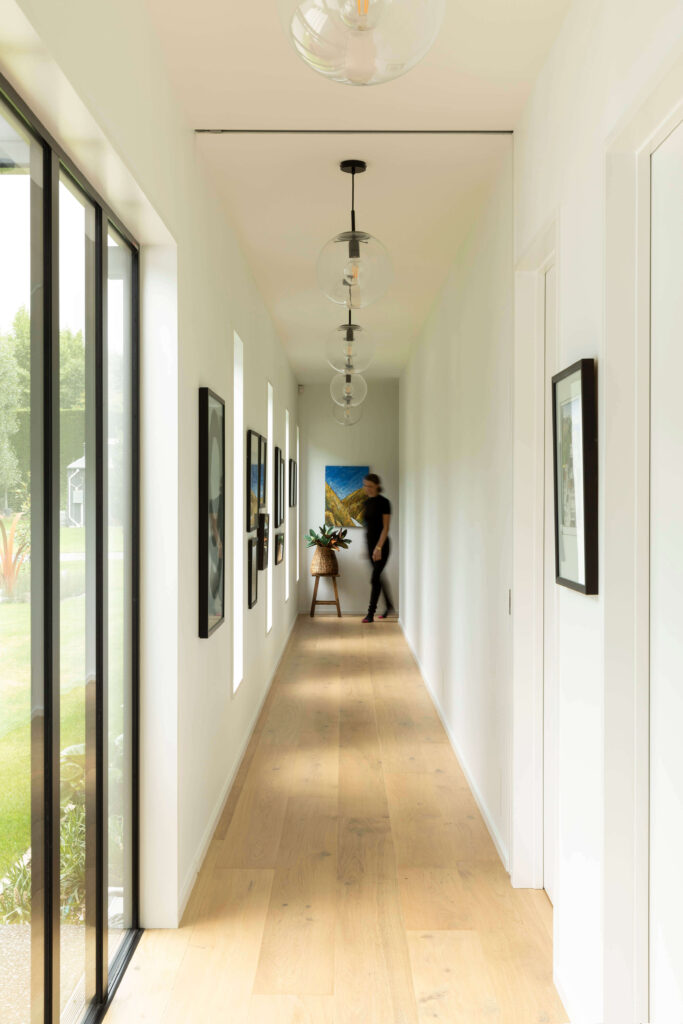Architectural Design Trends 2024: Inspiring Ideas for Your Dream Home
While past architectural trends have focussed on extension and functionality, architectural trends in 2024 are set to be driven by the desire to adapt and grow. This will mean a greater focus on incorporating technological and sustainable spaces designed to enhance and promote wellbeing.
With the current financial and environmental adversity the world is facing, we can also expect to see an underlying trend towards value for money with a focus on quality over quantity. Read on to find out more about the top 10 architectural trends for 2024.
1. A Nature First Approach
The future of building design and architecture is rapidly moving towards recognising the importance of integrating with nature instead of destroying it. The key concept here is the importance of the wellbeing of occupants with the natural environment at the forefront. Buildings and spaces will not only be about stylistic trends and aesthetics but more so about creating internal environments that protect and nourish the occupants – and the planet.
This might look like many different things within the scope of each project but could involve things like passive solar design, natural ventilation and net-zero energy homes (where the building produces all the energy it needs to operate). Or it could be as simple as incorporating living walls and green roofs emulating nature. The goal for architects here will be to bring a sense of serenity into the indoors, reducing stress and increasing productivity while promoting a deeper connection with nature and the outdoors.
2. The Rise Of AI In Architecture
Advances in technology will likely move even more into the spotlight in 2024 with the rise of AI integration. With vastly untapped potential, AI is likely to provide a wealth of opportunities within the design process (particularly the pre-planning stage) for a wide range of industries.
For architecture, in particular, this could mean tackling more complex problem-solving, eliminating a lot of the trial and error or guesswork and reducing time-consuming and repetitive tasks, resulting in an increase in an architect’s potential output and availability while reducing overall design costs and timeframes. With AI taking off, we are looking at the possibility of unparalleled efficiency and limitless creativity!
3. Improved Indoor Air Quality
Fast becoming a must-have rather than an optional extra, people are recognising the importance of indoor air quality in a world full of pollutants. Poor indoor air quality can lead to respiratory issues, allergies, and a variety of other health problems, which are becoming commonplace rather than just for those with sensitivities.
Design with a focus on improving air quality opts for greater emphasis on non-toxic building materials, minimising exposure to harmful chemicals and the use of more natural products that are less likely to harbour dust, mould, and allergens or release harmful substances into the air. The inclusion of whole-house HVAC systems in the design is also a large part of ensuring ongoing indoor air quality and will become commonplace from 2024 onwards.
4. Greater Technological Integration
Already widely used in and around the home, the technology design umbrella encompasses a wide range of in-home elements such as smart home tech and security through to things like robotics, 3D printing and augmented reality. For architects, the world of 3D printing means the ability to print custom features and building elements otherwise impossible using traditional construction methods.
The extended use of augmented reality also provides greater opportunities in being able to provide virtual walkthroughs of a building and spaces before they are built, aiding in the design process. This incorporation of increasingly intelligent technology works to improve communication and decision-making and ultimately increases the success of any build project.
5. Emphasis On Sustainable Design
Another major driver of architectural trends in 2024 is the ongoing emphasis on sustainability. For this one, we aren’t looking at any visible architectural styles or features but instead at the hidden cost to people and the planet within the building itself.
This could mean things like focusing on the energy performance of a building, its longevity, adaptability and functionality, reuse and recyclability, full life-cycle cost to the environment, as well as the individual materials and products used in the build and their origin and impacts etc.
6. Quality Over Quantity
Adopting a ‘quality over quantity’ stance is shaping up to be a key trend in 2024. Homeowners are increasingly looking for more compact spaces both indoors and out. Largely fueled by the desire for cost-effective, low-maintenance living, this trend will ultimately lead to buildings with lower total square meterage combined with compact outdoor areas coupled with easy-care landscaping options.
Smaller doesn’t necessarily mean lesser though, with the challenge here being the best use of space and multi-use spaces fit for purpose. From framing a significant view with the precise placement of a window to designing a full-height pocket slider that disappears, leaving the illusion of no door at all – architects love a challenge!
7. Renewable Energy Sources
The integration of renewable energy sources, such as solar panels and wind generation systems, will be a high priority for many in 2024 and beyond, especially with the increasing demands of electric vehicles and an overall increase in reliance on electricity in the home.
The challenge for architects in this area will be how to integrate this functionality into the design and structure of the building without compromising the desired outcome.
8. Environmental Resilience
Buildings designed with climate change in mind are becoming a higher priority especially in New Zealand. Something that has an effect on every building constructed here is the rise of climate-related risks, such as extreme weather events and sea level changes.
Mitigating these risks when building are a top priority for architectural designers while keeping longevity and adaptation in mind. The need to focus on higher levels of flood/weather-resistant materials, stormwater management and extreme temperature variations and the effect of these things on the types of buildings designed will take precedence.
9. Modular Construction
In the name of cost efficiency and flexibility, modular construction is likely to become a popular option for many when building their own home. Modular construction has many benefits, including reduced wastage, time-saving, improved quality control and easy expansion and reconfiguration.
2024 will likely see the expansion of the current market in prefabricated modular homes designed to be built off-site, then transported and assembled at their final destination.
10. Renovating And Transforming Existing Structures
Always a popular choice in New Zealand, renovating an existing building and transforming it into something new is not only cost-effective, but it speaks to the good old reuse and recycle attitudes set within our traditional DIY culture.
This adaptive-reuse approach is environmentally conscious as it involves repurposing old buildings instead of completely demolishing them as well as recycling as much of the old as possible. Architecturally this presents the exciting challenge of transforming existing spaces while preserving aspects of their history – which is a whole design trend in itself!
11. Inclusive Design
Buildings are becoming much more than a place to eat, sleep and live; they are a place of relaxation, collaboration and expression. The needs of the occupants extend beyond the norm into areas such as acoustic comfort, cultural sensitivity, and diversity with a focus on creating spaces that resonate with the occupants and their communities.
Designing adaptable spaces accommodates the dynamic nature of modern life, leading to more user-centric design. This might mean the incorporation of flexible work-from-home spaces for some, yoga or workout studios for others, and even accommodating the locals as a meeting place – the possibilities are endless!
Whether it’s integrating a cosy reading nook, multi-use spaces for indoor/outdoor entertaining, or devising a clever way to incorporate energy-efficient elements, architecture in 2024 is not just about constructing buildings that serve a purpose, it’s about creating and merging different designs, styles, techniques and features creating a more mindful building solution. LM Architectural Builders are passionate about creating exceptional bespoke homes, give us a call today to discuss your dream home plans.



